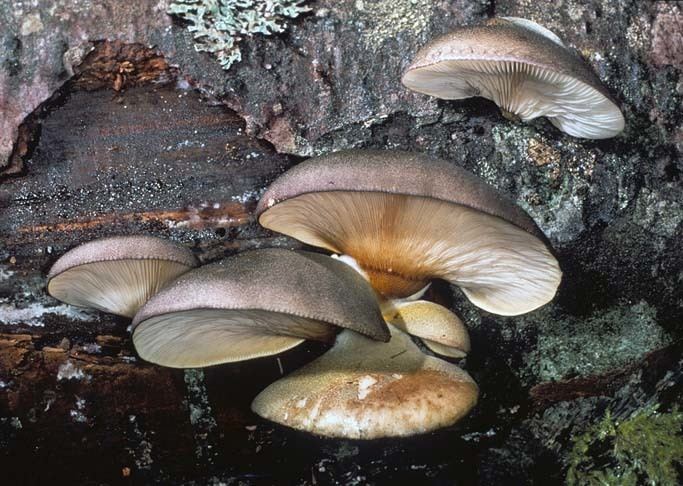Kingdom Fungi Order Agaricales Scientific name Panellus Rank Genus | Division Basidiomycota | |
Lower classifications Panellus stipticus, Panellus serotinus | ||
Source of light emission in a luminous mycelium of the fungus panellus stipticus
Panellus is a genus of at least 3 mushroom species of fungi in the Mycenaceae family as defined molecularly. Prior to molecular analyses the generic name had been used for any white-spored pleurotoid with amyloid spores. Unrelated but similar species are now classified in Sarcomyxa and Scytinotus. In older guides and other literature the type species had been placed in either Pleurotus or Panus and the poroid species had been classified in the synonymous genus Dictyopanus or in broadly defined genera like Polyporus (Polyporaceae) or the more closely allied Favolaschia (Mycenaceae). The closest molecular allies are Resinomycena and Cruentomycena.
Contents
- Source of light emission in a luminous mycelium of the fungus panellus stipticus
- Panellus stipticus top 11 facts
- Description
- References
Panellus stipticus top 11 facts
Description

The fruit bodies of Panellus species are small and pleurotoid, meaning they grow on wood, have gills, and usually form semicircular or kidney-shaped caps that may be either directly attached to the wood, or connected by short stipes. The stipe is usually connected to the side of the cap, or off-center. The gills on the underside of the cap usually radiate outward from the attachment point, or may be strongly interveined to form a reticulum. The spores are hyaline (white in deposit), thin-walled, smooth and amyloid. Panellus is one of several genera in the Mycenaceae that are bioluminescent.


